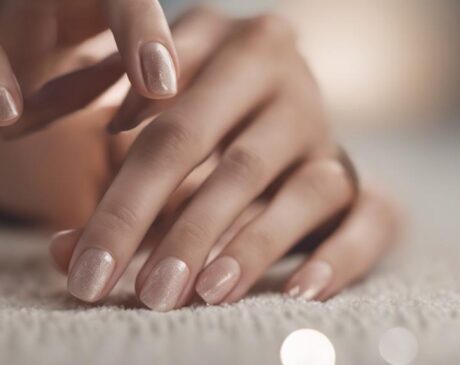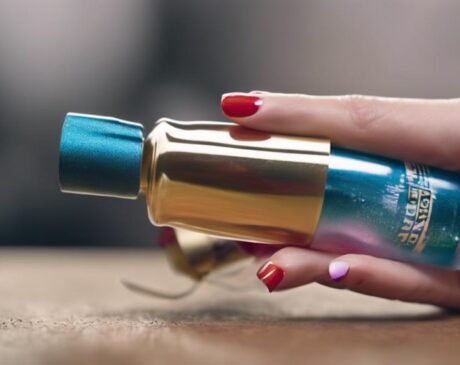What Are Reasons Nail Polish Wont Dry?
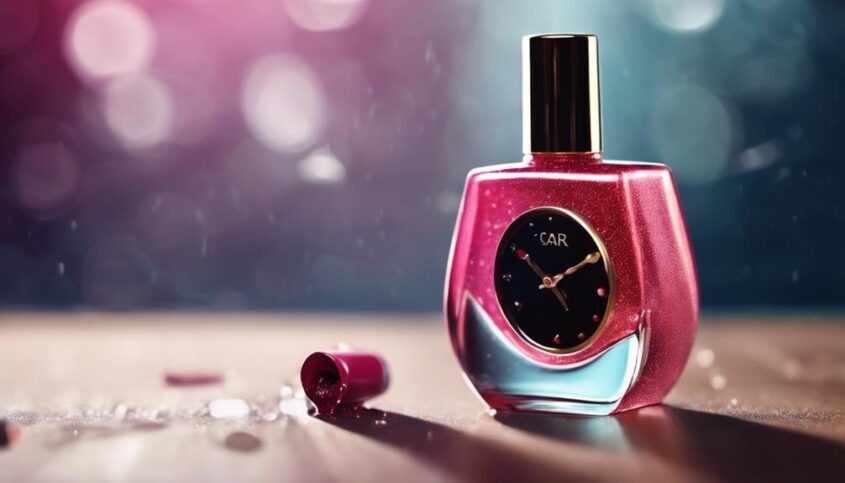
Nail polish may not dry due to: improper application techniques, like using thick layers; high humidity or low temperatures; low-quality or old polish; or insufficient drying time. To promote faster drying, opt for thin, even coats and quick-dry products. Nail polish can be affected by humidity, so create a controlled environment. Quality polish is crucial for a smooth finish. Waiting for proper drying time is key; use quick-dry formulas, drying drops, or cooling techniques. For more tips on achieving quick-drying, flawless nail polish application, explore additional factors that affect drying time.
Key Takeaways
- Thick layers of polish hinder drying by trapping solvents.
- High humidity and temperatures slow down evaporation.
- Excessive polish application leads to longer drying times.
- Old or low-quality polish affects drying process.
- Insufficient drying time results in smudges and imperfections.
Incorrect Application Techniques
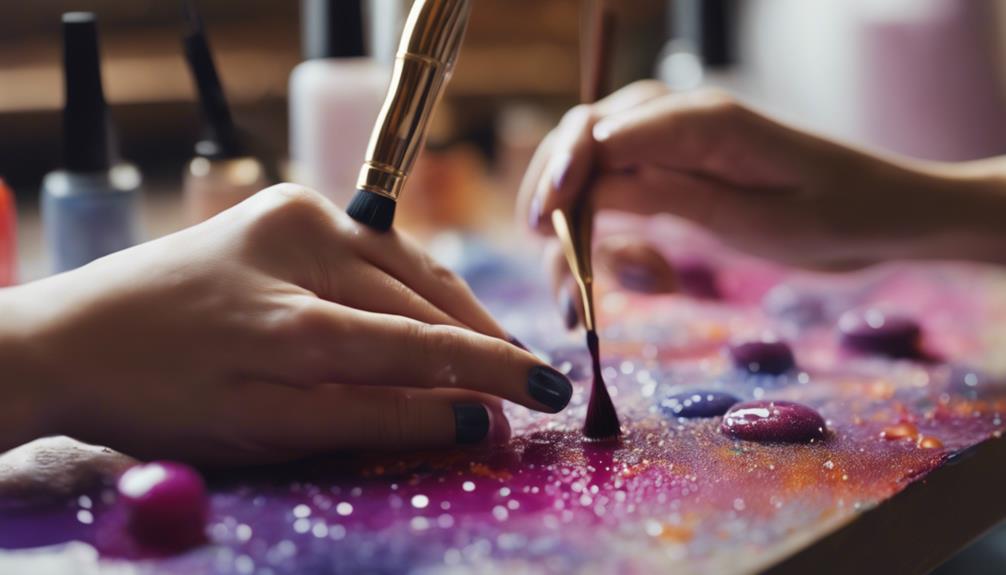
Improper application methods can significantly hinder the drying process of nail polish. One common mistake is applying thick layers of polish, which take longer to dry. Instead, opt for thin, even coats to allow for quicker and more thorough drying. Additionally, not allowing each layer to dry fully before applying the next can lead to smudging and extended drying times. To combat this, consider using quick-dry formulas or drying drops to speed up the process without compromising the finish.
Furthermore, shaking the nail polish bottle vigorously before application introduces air bubbles, causing an uneven application and prolonged drying. Instead, gently roll the bottle between your palms to mix the polish. Another key point is to ensure the nail bed is clean and dry before beginning the application to promote adhesion and streamline the drying process.
Innovative techniques such as using LED or UV nail lamps can also expedite drying times significantly, offering a professional finish in a fraction of the time. By incorporating these precise application methods and innovative technologies, achieving quick-drying, flawless nail polish results is well within reach.
Humidity and Temperature Levels
High humidity and temperature levels can significantly impact the drying process of nail polish, affecting both the application and final finish. When the air is humid, the moisture in the air slows down the evaporation of the solvents in the nail polish, leading to prolonged drying times. Similarly, high temperatures can cause the polish to dry too quickly, resulting in a sticky or uneven finish. To combat these issues, consider the following:
- Controlled Environment: Create an optimal drying environment by ensuring the room is well-ventilated and at a moderate temperature to facilitate the drying process.
- Quick-Dry Products: Invest in quick-dry topcoats or nail polish formulas designed to speed up the drying time, even in humid conditions.
- Cooling Techniques: Utilize techniques such as dipping painted nails in cold water or using a fan to cool the polish quickly and set it in place.
Thick Layers of Nail Polish
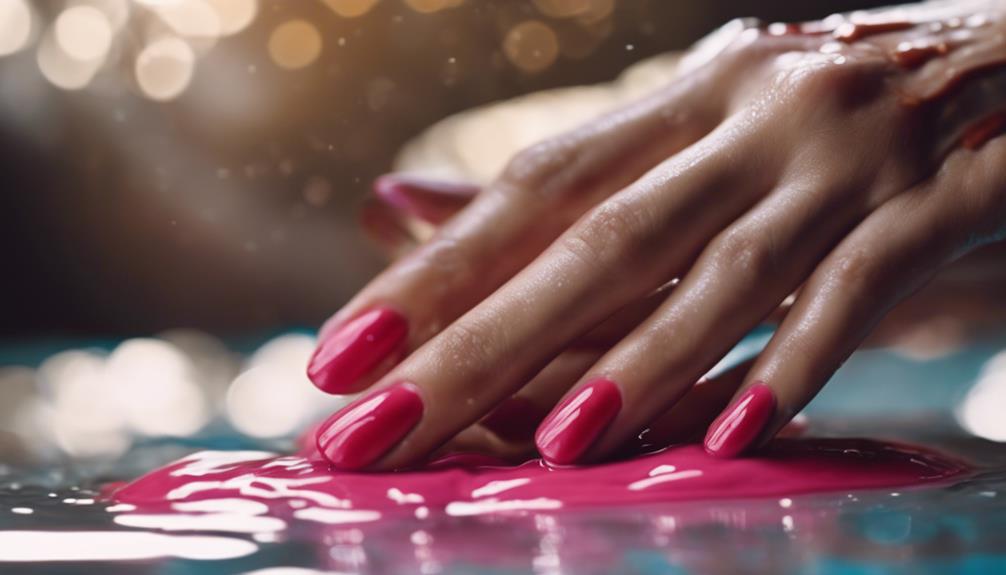
Excessive application of nail polish can hinder the drying process and result in longer wait times for the polish to set properly. When thick layers of nail polish are applied, each layer needs to dry completely before the next is added. This means that if the layers are too thick, the solvents in the polish struggle to evaporate efficiently, leading to extended drying times. Moreover, thick layers are more prone to smudging and denting since the polish underneath may still be wet while the top layer appears dry.
To combat this issue and expedite the drying process, it is advisable to apply thin, even coats of nail polish. Thin layers dry more quickly and evenly, ensuring a smoother and more durable finish. Additionally, using a quick-dry top coat can help seal the layers beneath and accelerate the overall drying time. By adopting these innovative techniques, individuals can achieve faster drying times and flawless nail polish application.
Poor Quality or Old Nail Polish
When selecting nail polish, ensuring its quality and freshness is essential to facilitate proper drying and long-lasting wear. Poor quality or old nail polish can significantly impact the drying process and the overall look of your manicure. Here are three key reasons why poor quality or old nail polish may hinder the drying process:
- Chemical Composition: Over time, nail polish can break down, leading to changes in its chemical composition. This breakdown can result in a formula that does not dry properly, no matter how thinly or evenly it is applied.
- Lack of Pigmentation: Old nail polishes may lose their pigmentation, causing streaks and uneven coverage. This can prolong the drying time as multiple coats may be needed to achieve the desired color intensity.
- Texture Changes: As nail polish ages, its texture can become clumpy or thick, making it challenging to apply smoothly. This uneven application can prevent the polish from drying evenly and result in a tacky finish.
Insufficient Drying Time
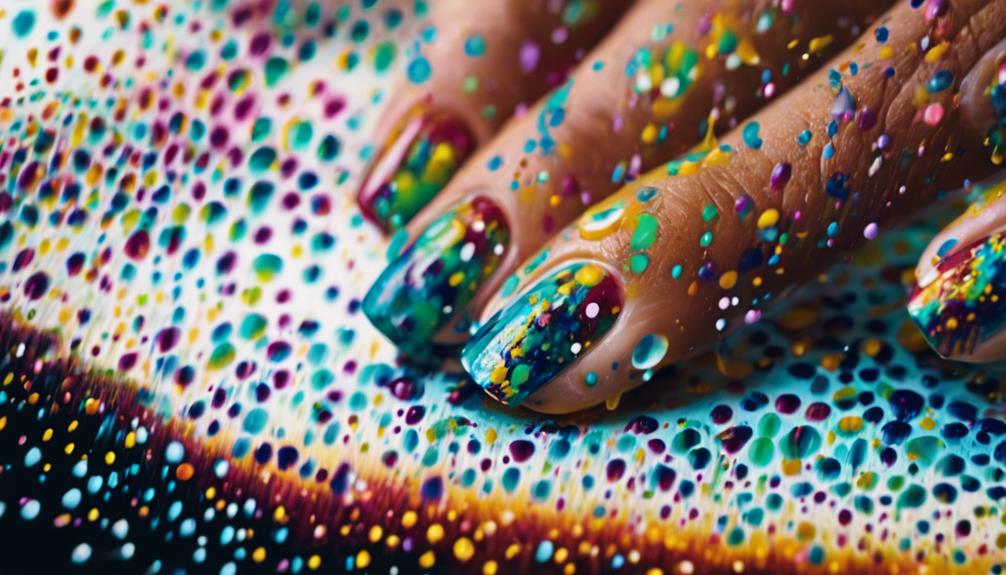
Properly allowing nail polish to dry is crucial for achieving a flawless and long-lasting manicure. One of the most common reasons for nail polish not drying efficiently is insufficient drying time. In today's fast-paced world, waiting for nail polish to dry can seem like a tedious task. However, this step is essential for a perfect finish.
To expedite the drying process, consider using quick-dry nail polish formulas or a top coat specifically designed to set nail polish faster. Another innovative solution is to try nail polish drying drops or sprays, which can help accelerate the drying time significantly.
Moreover, using a fan or a blow dryer on a cool setting can also aid in drying the nail polish more quickly. Ensuring that each layer of polish is applied thinly can also help speed up the drying process. By implementing these innovative techniques and allowing adequate drying time, you can achieve a flawless manicure in no time.
Frequently Asked Questions
Can Using a Top Coat Help Nail Polish Dry Faster?
In the realm of nail care, a top coat is the enchanted elixir that accelerates the drying process, bestowing upon your lacquered nails a swift transformation. Its innovative formula seals in color and shine, ensuring a speedy dry time.
Will Blowing on My Nails Help Them Dry Quicker?
Blowing on your nails may provide a temporary cooling effect, but it can introduce moisture, dust, and bacteria, potentially hindering the drying process. Utilizing quick-dry nail polish products or setting sprays can yield more effective and efficient results.
Does Shaking the Nail Polish Bottle Before Applying Affect Drying Time?
Shaking the nail polish bottle before application may introduce air bubbles, affecting the drying time. To ensure optimal results, gently roll the bottle between your palms to mix the polish without creating bubbles, promoting smoother and quicker drying.
Can Using a Hair Dryer or Fan Speed up the Drying Process?
Utilizing a hair dryer or fan can expedite the nail polish drying process by enhancing air circulation, reducing moisture retention, and promoting quicker evaporation. This dynamic duo creates a whirlwind of efficiency in nail beautification.
Is It Better to Apply Thin Coats of Nail Polish for Faster Drying?
Applying thin coats of nail polish can expedite the drying process due to quicker evaporation. This technique allows each layer to dry efficiently, promoting a faster overall drying time. Thin coats also help prevent smudging and ensure a smoother finish.


